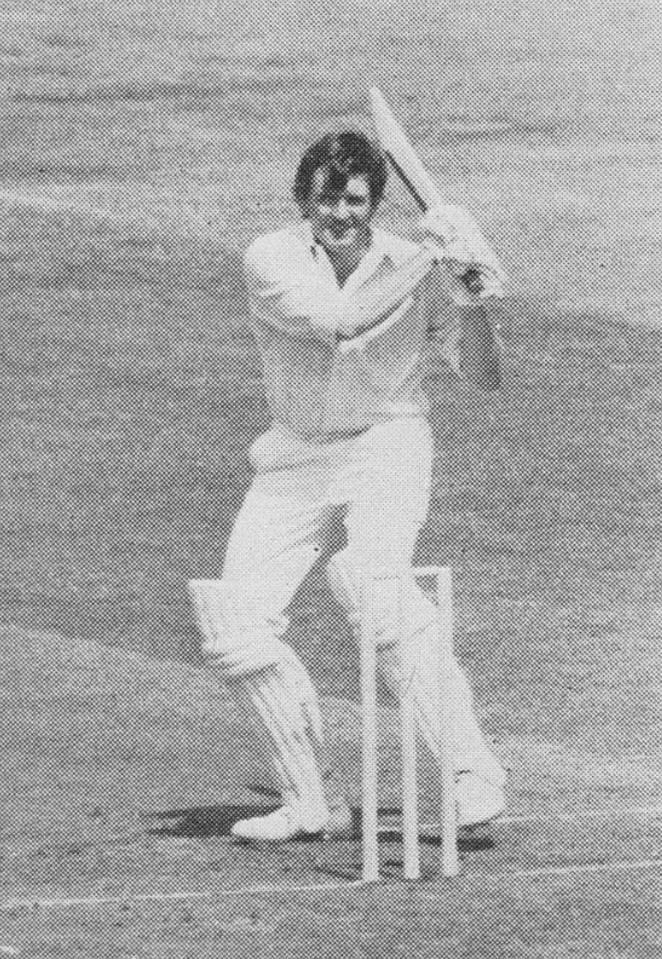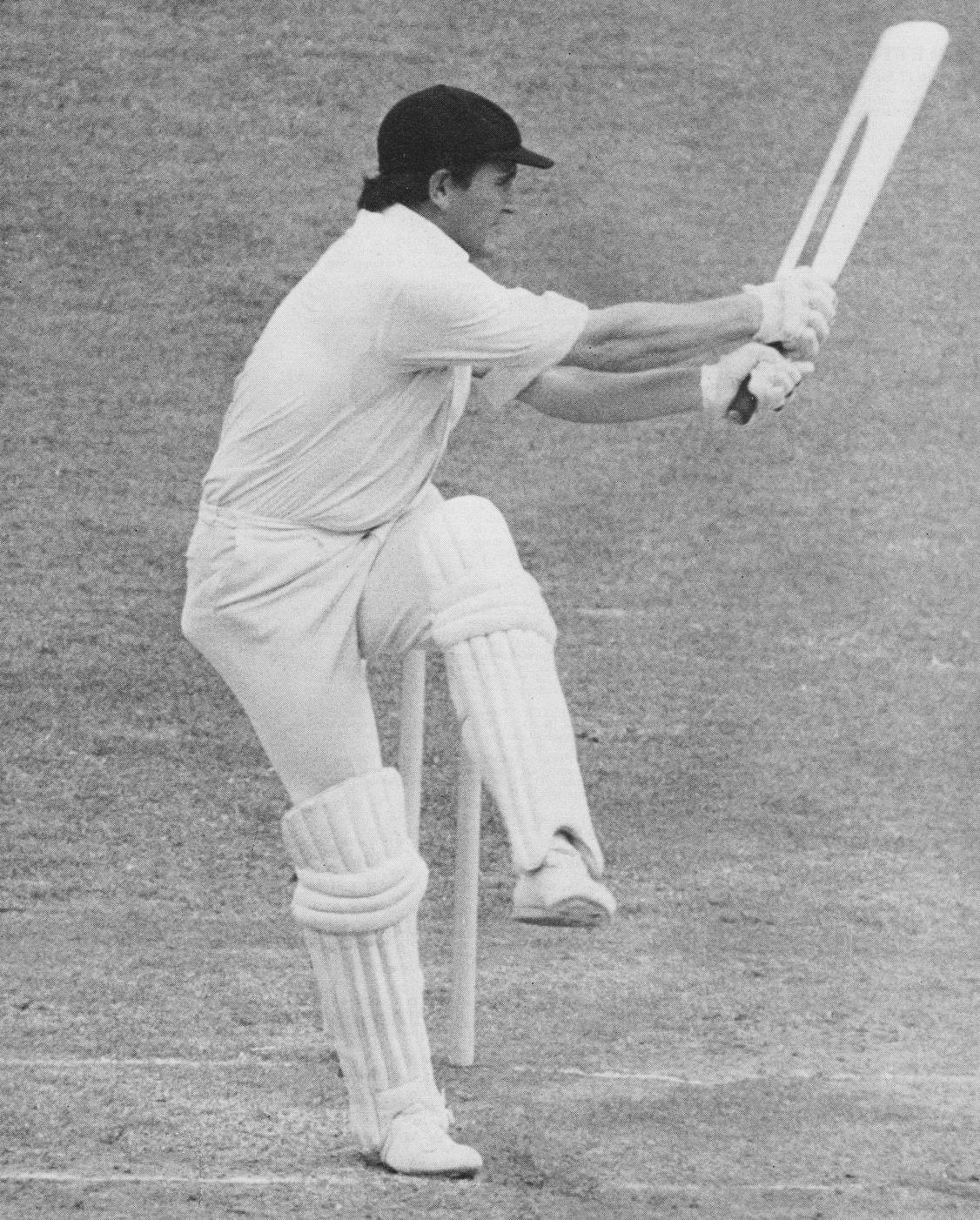There are some players for whom it would be difficult to journey across the road, but for Keith Stackpole and his powerful right hand, it is worth going the extra mile.
Keith Stackpole’s time cartoons of cricketers generally depicted the flanneled fool as a slimly-built young man who could leap about extraordinarily all over the park. As cricket followers know, they come in all shapes and sizes these days, with the Australians walking onto the field with the rangy Ashley Mallett alongside that squarely-built figure of Keith Stackpole.
Keith Stackpole is more in the mould of the village blacksmith or even your cheerful family butcher. However, opposition bowlers get little pleasure from ruminating over the fact that his well-fed appearance belies his quick footwork and fast reflexes. At the time of writing, he leads the Australian batting averages for the Test series against England, and he is averaging 15 runs per inning more than any other player on the home side.
There are those in the England team who shake their heads when the ball flies over, slips from an attempted square cut or runs off the edge from a straight drive. We all should give thanks that they have the privilege of cursing their ill luck. That so-called misfortune is the spectators’ delight, and I only wish there were more batsmen in the world willing to take their chance and hit the ball with the bat, rather than allow the opposite to take place.
Keith Raymond was christened back on July 10, 1940, at a time when his father, also Keith, was a topline player in Victoria, where he played for the Sheffield Shield team. Keith Senior was much like his son in the power of his cutting and hooking, and both over the years have been a real strength to the Collingwood team in the hard-fought Melbourne first-grade competition. Most cricketers know the younger Stackpole as ‘Stacky’ and that has been the case from the time he made his debut for Victoria at the age of nineteen.
That game was first-class, but only against Tasmania, and it was three years before he gained a spot in the Sheffield Shield team. From that point, it was only two years before he was playing for Australia against Mike Smith‘s MCC team of 1965–66, coming into the Adelaide Test, and the last one played in Melbourne. He was then, as he is now, an attacking batsman with a genuine desire to add to the spectators’ enjoyment of the game and a belief that the faster the batsmen score, the more chance there is of winning the match. At the same time, the early period of his cricket was marked by a lack of experience. As in that far too often he was dismissed on the hook shot by bowlers deliberately ‘feeding’ him with the short-pitched delivery.
Nowadays, he is far more circumspect in that regard, and, though he has been dismissed from the bouncer on the current tour, he has played the hook shot with discretion. Richie Benaud I suppose he is as close to being an ideal member of a touring team as it is possible to find, ever ready to practice, helpful with the younger players, and, under that cheerful, ruddy exterior, possessed of a fierce will to win. It was the high point of his career to be named vice captain for this tour of England, and he and Ian Chappell have worked well together on all aspects of cricket over the past few months. Keith Stackpole has been a gradual elevation to the top in Australian cricket, and he has had some hard times as well as successes.

At one point, his batting form was such that his place in the national team must have been in some jeopardy, and it wasn’t really until he began to open with Lawry that his form entitled him automatically to a place in the side. Against the West Indies in Australia in 1968–69, he had a good series and some fine performances in the Shield matches, and then against India and South Africa, on that ill-fated tour, he again scored over 1,000 runs. Around this time, he was batting with tremendous confidence, hooking and cutting, and extending his range with many more front-foot strokes.
When England came to Australia under Ray Illingworth’s leadership, it was Keith Stackpole who carried the attack to the faster bowlers right from the first Test played in Brisbane. Then he hit a masterclass 207, with the bowlers becoming more and more frustrated and more and more convinced that, in the end, the ebullient right-hander must get an edge to slip or be caught on the hook. It was an expensive lesson and one they heeded with their bowling tactics for the rest of the series. Stackpole made over 600 runs in the six Tests played on that tour, and, when he batted just as well in the unofficial series against the Rest of the World, he was one of the first men chosen for England.
There was a time when his slow bowling earned him the courtesy title of all-rounder. but now he bowls rarely in Test or Sheffield Shield matches. Probably the reason for this is his elevation to the top of the batting order and a consequent desire to concentrate fully on the job at hand rather than take the chance of being tired late in the day if he has to bat for the last half hour. As a change bowler, he is quite useful, though he doesn’t spin the ball very much most of the time, it hurries off the pitch more like a top-spinner than a leg break. In some ways it is probably a good thing he has forsaken the ball for the bat, for Australia had at one stage developed a dangerous tendency to classify as an allrounder anyone who could bat well and be used as a change bowler.
Far better is the situation now, where Deniss Lillee, Bob Massie, and one spinner form the backbone of the attack and allow the batsmen to get on with their task of hitting the ball to provide a target at which the bowlers can bowl. Stackpole’s batting method is, to me, beautifully simple. If the ball is a halfvolley, hit it for four! If it is short, hook or cut for four! If you can’t get four, then take three or two or a quick single, and, if that is impossible, then play it defensively.
Add to that the fact that he doesn’t much mind if it is the first ball of the inning or the last, and it is easy to see why he is an extremely popular player with spectators in all the cricket countries where he has toured. Before this year, his only experience with English pitches was one season in the Lancashire League. There was a school of thought that he might have difficulty with his method of concentrating on the back foot strokes, but, like any really good batsman, Keith Stackpole adjusted his batting to the conditions.
At 32, he is one of the oldest players in the team, but he still has plenty of cricket left in him for Australia and for Victoria. The pleasant thing to contemplate is that whenever and wherever he plays, it will always be worth the price of admission to watch him bat. There are some players for whom it would be difficult to journey across the road for Keith Stackpole and his powerful right hand, it is worth going many a mile.

Source: Richie Benaud